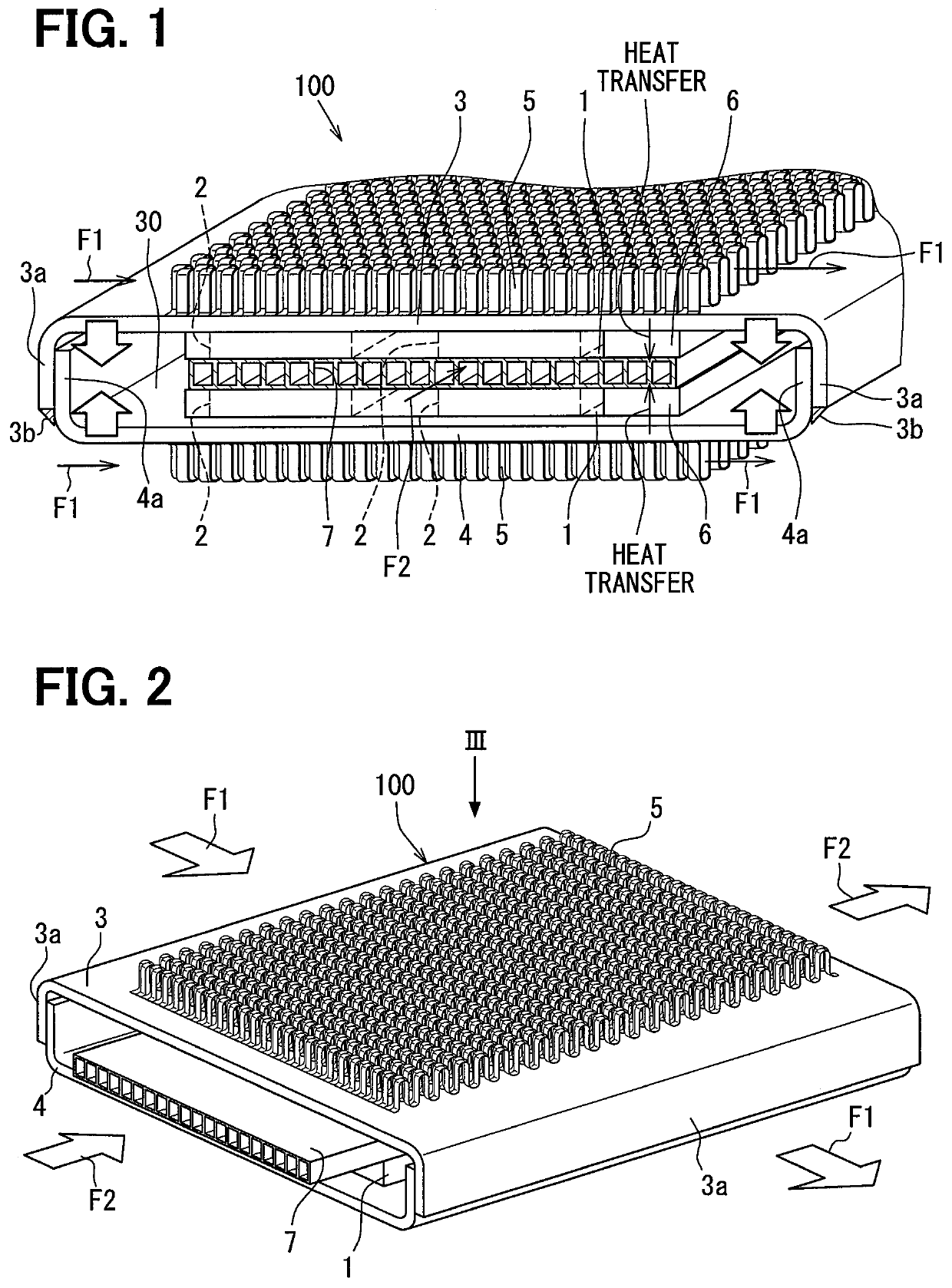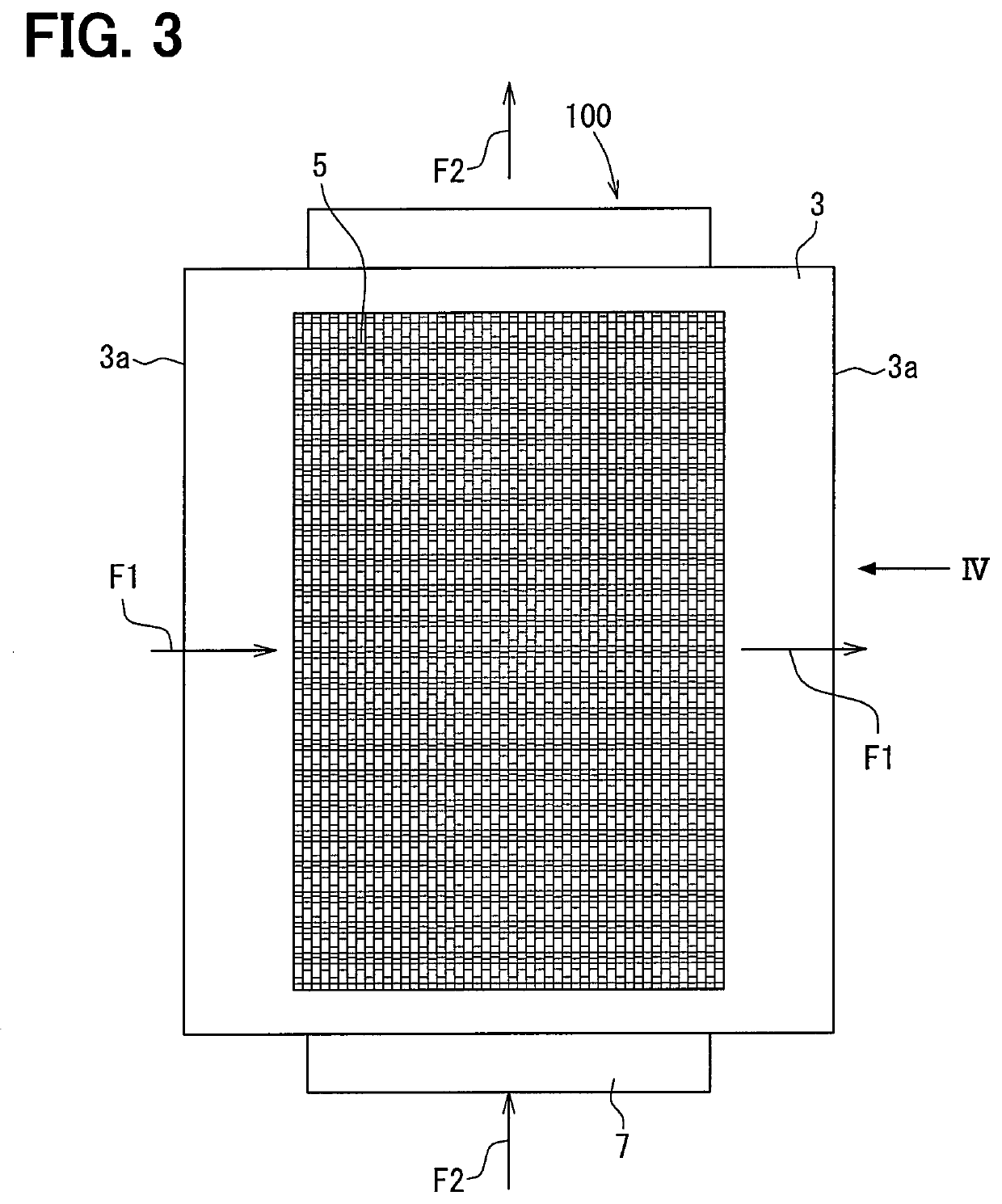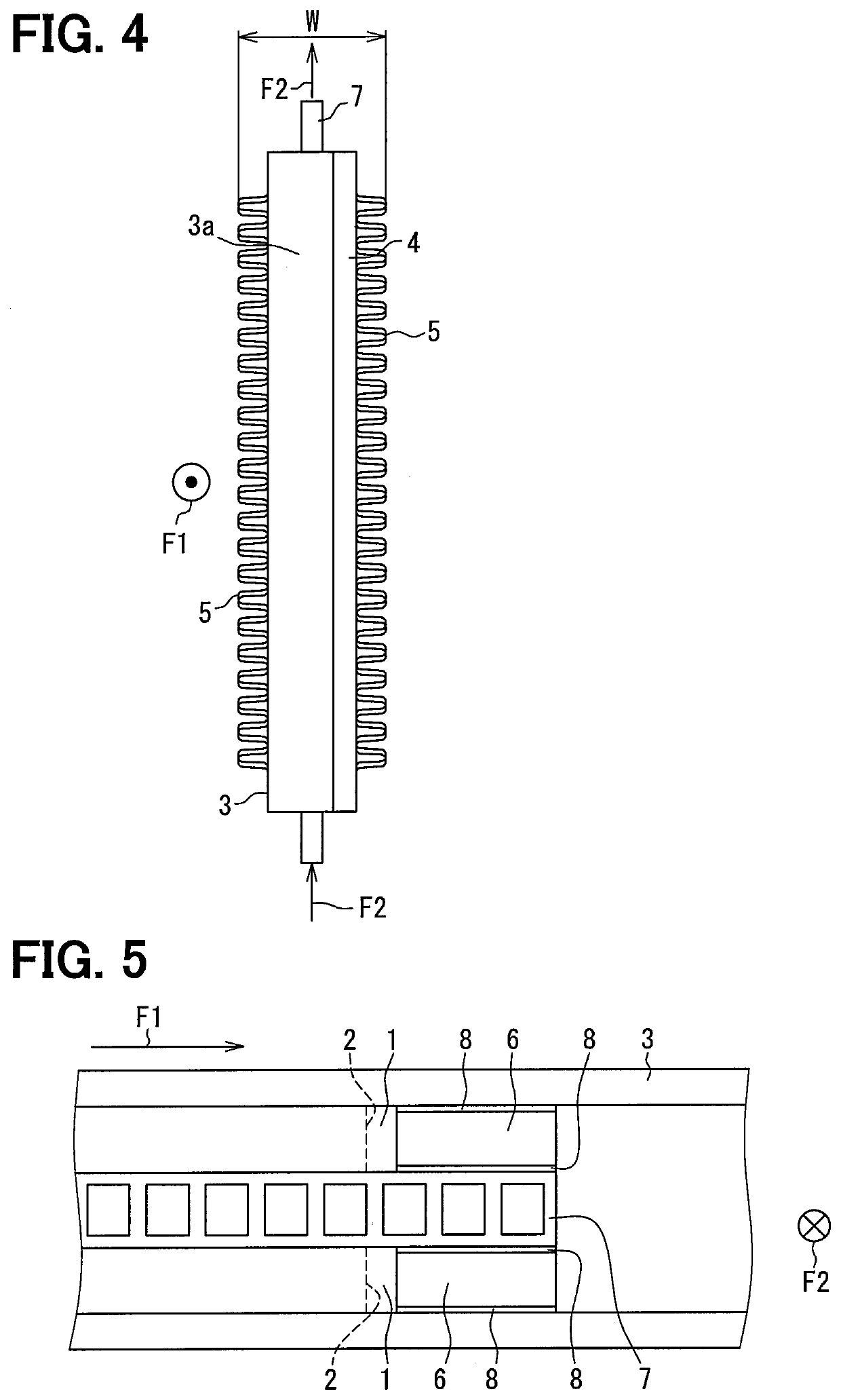Thermoelectric power generator
a generator and heat recovery technology, applied in the direction of machines/engines, mechanical equipment, surface coverings, etc., can solve the problems of complicated device configuration, achieve excellent heat collection performance and power generation performance, and increase the heat recovery amount from the second fluid to the first fluid
- Summary
- Abstract
- Description
- Claims
- Application Information
AI Technical Summary
Benefits of technology
Problems solved by technology
Method used
Image
Examples
first embodiment
[0027]A thermoelectric power generator 100 of a first embodiment is described with reference to FIG. 1-FIG. 6. The thermoelectric power generator 100 is an equipment which can transform thermal energy into electric power energy by the Seebeck effect. When a difference in temperature is generated between one side and the other side in a power generation module having a thermoelectric conversion element, the thermoelectric power generator 100 generates electric power using phenomenon in which electrons flow due to potential difference. The difference in temperature is generated between the one side and the other side of the power generation module using a first fluid having low temperature and a second fluid having high temperature higher than the first fluid in the thermoelectric power generator 100. The first fluid and the second fluid are selected to provide the difference in temperature. In this embodiment, for example, the cooling water of an engine for a vehicle is used as the f...
second embodiment
[0062]A second embodiment is described with reference to FIG. 7. A configuration having the same reference numeral as the first embodiment in FIG. 7 is the same as that of the first embodiment. The configuration, processing, action, and effect not particularly explained in the second embodiment are the same as the first embodiment. Hereafter, only points different from the first embodiment are explained.
[0063]A thermoelectric power generator 200 of the second embodiment is different from the thermoelectric power generator 100 of the first embodiment in that a heat conductive component 106 is disposed between the power generation module 1 and the power generation module 1. The heat conductive component 106 has the same configuration and is made of the same material as the heat conductive component 6 to generate the same action and effect.
[0064]The thermoelectric power generator 200 includes the heat conductive component 106 which has thermal conductivity. The heat conductive componen...
third embodiment
[0068]A third embodiment is described with reference to FIG. 8. A configuration having the same reference numeral as the first embodiment in FIG. 8 is the same as that of the first embodiment. The configuration, processing, action, and effect not particularly explained in the third embodiment are the same as the first embodiment. Hereafter, only points different from the first embodiment are explained.
[0069]A pipe 107 of the third embodiment is different from the pipe 7 of the first embodiment in that the heat conductive component 6 is integrally formed with the pipe 107. The pipe 107 integrally includes the heat conductive component 6 projected from the respective sides of the pipe 107 at the downstream end in the flowing direction F1. The heat conductive component 6 in the pipe 107 is located downstream of the power generation module 1 in the flow of high-temperature fluid in the state where the power generation module 1 is in the tight contact with the respective sides of the pip...
PUM
 Login to View More
Login to View More Abstract
Description
Claims
Application Information
 Login to View More
Login to View More - R&D
- Intellectual Property
- Life Sciences
- Materials
- Tech Scout
- Unparalleled Data Quality
- Higher Quality Content
- 60% Fewer Hallucinations
Browse by: Latest US Patents, China's latest patents, Technical Efficacy Thesaurus, Application Domain, Technology Topic, Popular Technical Reports.
© 2025 PatSnap. All rights reserved.Legal|Privacy policy|Modern Slavery Act Transparency Statement|Sitemap|About US| Contact US: help@patsnap.com



